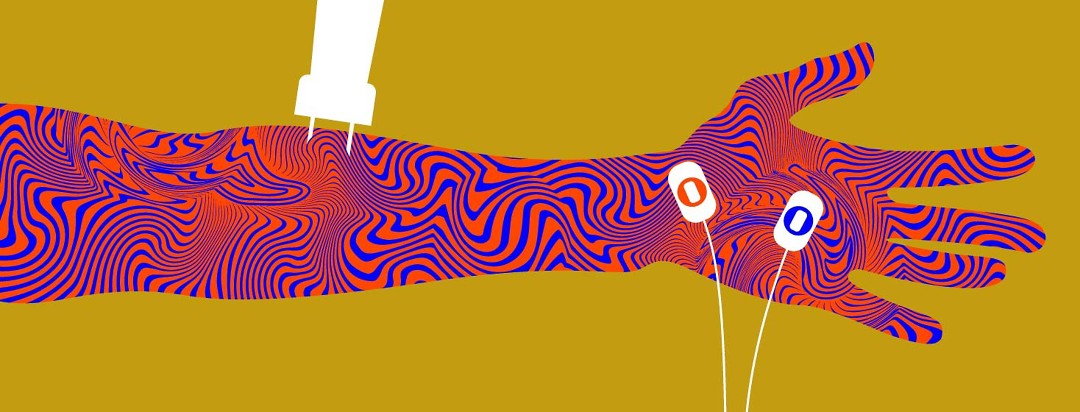EMG Testing for Myasthenia Gravis: What to Expect
Myasthenia gravis (MG) is a condition that affects the way nerves communicate with muscles. Diagnosing myasthenia gravis can take a while – many people end up waiting years for their MG diagnosis. However, electromyography (EMG) testing gets to the heart of the matter: the nerves and the muscles themselves.1
What is EMG testing?
EMG testing measures the speed and the strength of the electrical signals sent from the nerves to the muscles. There are 2 ways to do this:
- A nerve conduction study (NCS) uses electrode stickers (also called surface electrodes) on the skin to send a small electric shock to the muscles below
- A needle EMG, where a small, thin needle electrode is inserted into the muscle
If you flinched when you saw the words “needle” and “shock,” you are not alone. Doctors’ studies say that the test is not painful. However, people commenting on Myasthenia-Gravis.com report everything from mild discomfort to intense pain.3
Does it hurt?
EMG testing is known to be safe and low-risk. You may feel some discomfort or pain during an EMG test. Talk with your doctor about taking pain medicine before the tests if you are concerned.4
The most common side effect you may have is some muscle soreness after the test. The soreness may be similar to the way muscles may feel after exercising for the first time in a while. This soreness should not last longer than a couple of hours. Rarely, people who get a needle EMG have some bleeding or a minor infection where the needle was inserted.2,4
How to prepare
Tell your doctors if you take any prescription or over-the-counter drugs, especially if you are on an anticoagulant, a blood thinner, or Mestinon® (pyridostigmine).
You should also let the doctor know if you have a pacemaker or implanted defibrillator. These things will not interfere with the test or make it less safe, but it is good for the doctor to know.2,4
On the day of your test, you may be asked to take a bath or shower before your exam to prepare the skin. Do not put any lotions, creams, powders, or other things on your skin.2
What to expect during a test
EMG tests can last from 30 to 90 minutes. They will be performed by a trained specialist, most likely a physiatrist or neurologist. The results will then be sent to your doctor.4
You will most likely change into a hospital gown and lie down to take the test. The specialist will then get to work, placing the surface electrode stickers on your skin or inserting the needle electrodes. Some people get both tests at a time.2
Then, tiny electrical currents will be sent through the electrodes. This will feel like a small twitch or a spasm that will end right after the electrode is removed.
You may be asked to squeeze and relax your muscles or to change your position so that another area can be tested. If you start to feel uncomfortable, it is fine to ask the specialist if you can take a break.2
Recovery
If you had a needle EMG test, it is normal to have some bruising where the needles were inserted. If these do not fade after a few days, call your doctor. You may also feel some muscle soreness later.2

Join the conversation